Category: Currently Showing
-
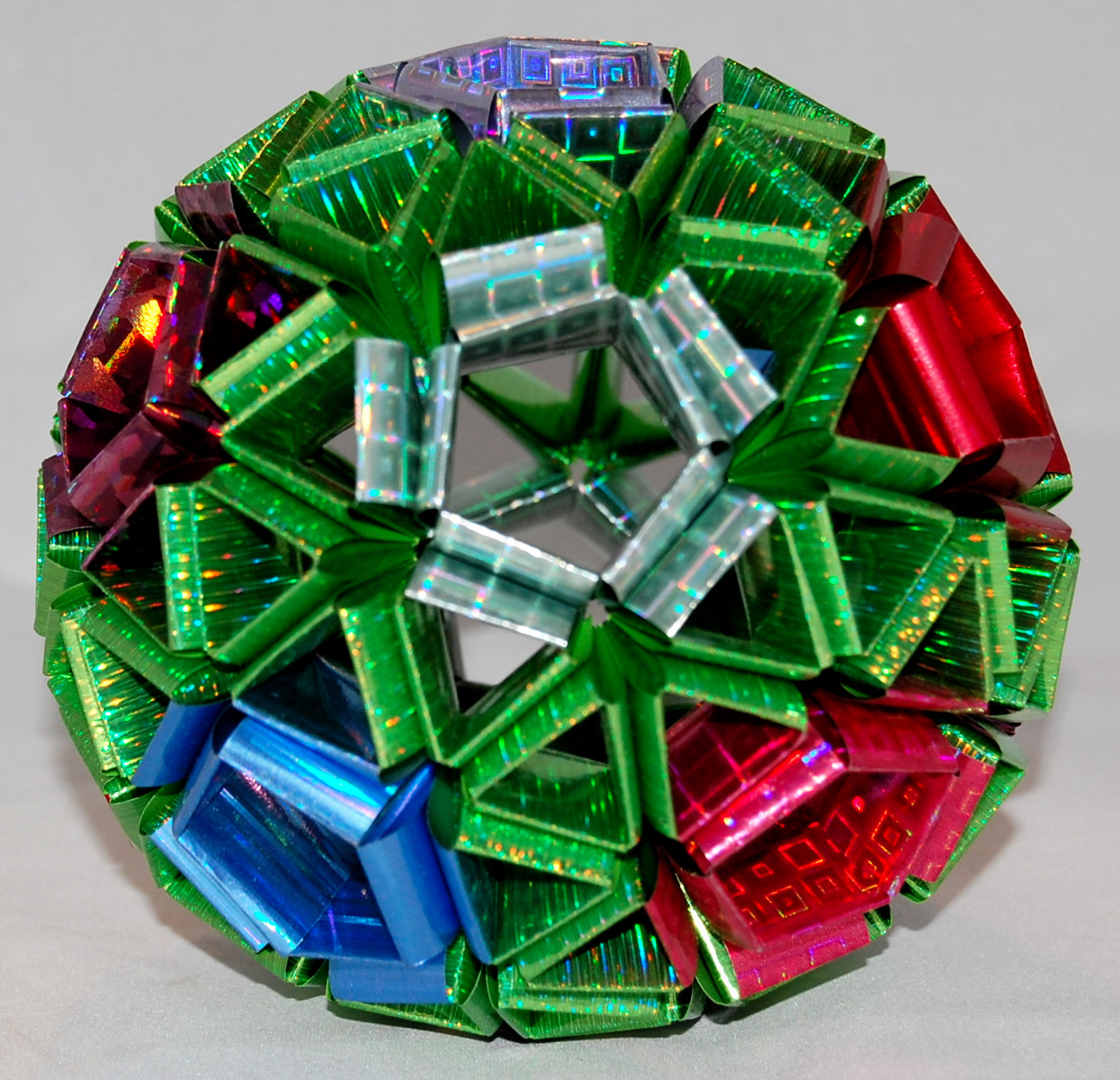
Faye Goldman (Snub dodecahedron)
Flower Garden, polypropylene ribbon [92 F, 150 E, 60 V] The snub dodecahedron is an example of what’s known as an Archimedean solid, a shape all of the faces of which are regular polygons, with all vertices identical and interchangeable. (In other words, it is possible to rotate the solid so that any vertex is…
-
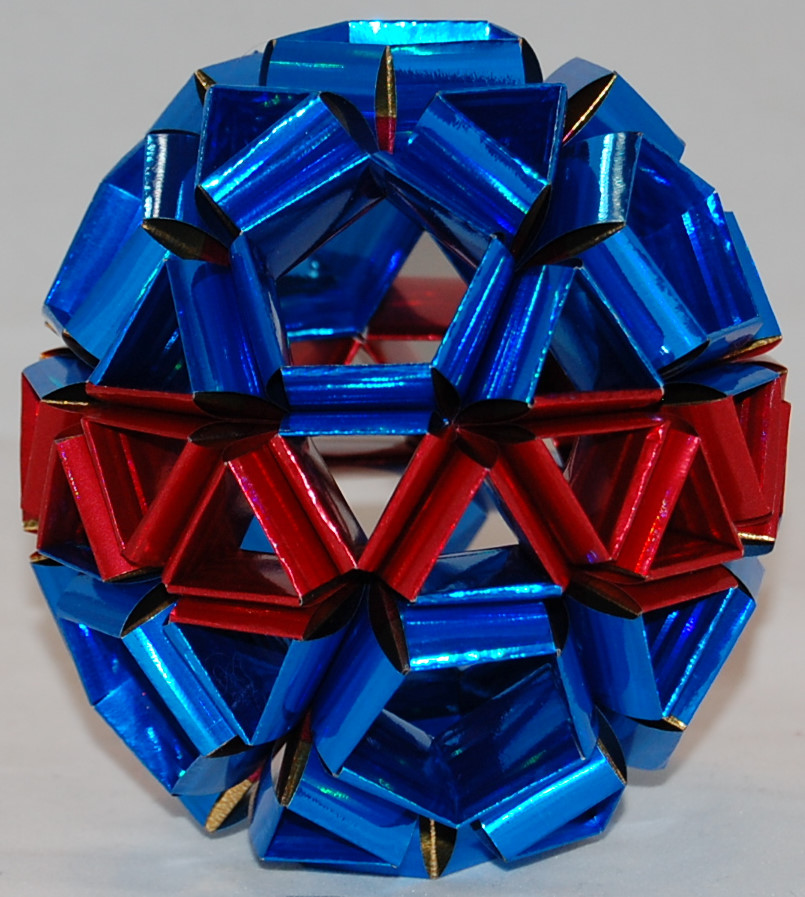
Faye Goldman (gyroelongated pentagonal birotunda)
Snapology Johnson 48, polypropylene ribbon [52 F, 90 E, 40 V] This shape is one of the Johnson solids, the 92 polyhedra with no indentations, all of whose sides are regular polygons, that do not have as much symmetry as the Platonic or Archimedean solids. This particular polyhedron is the 48th on the list originally…
-
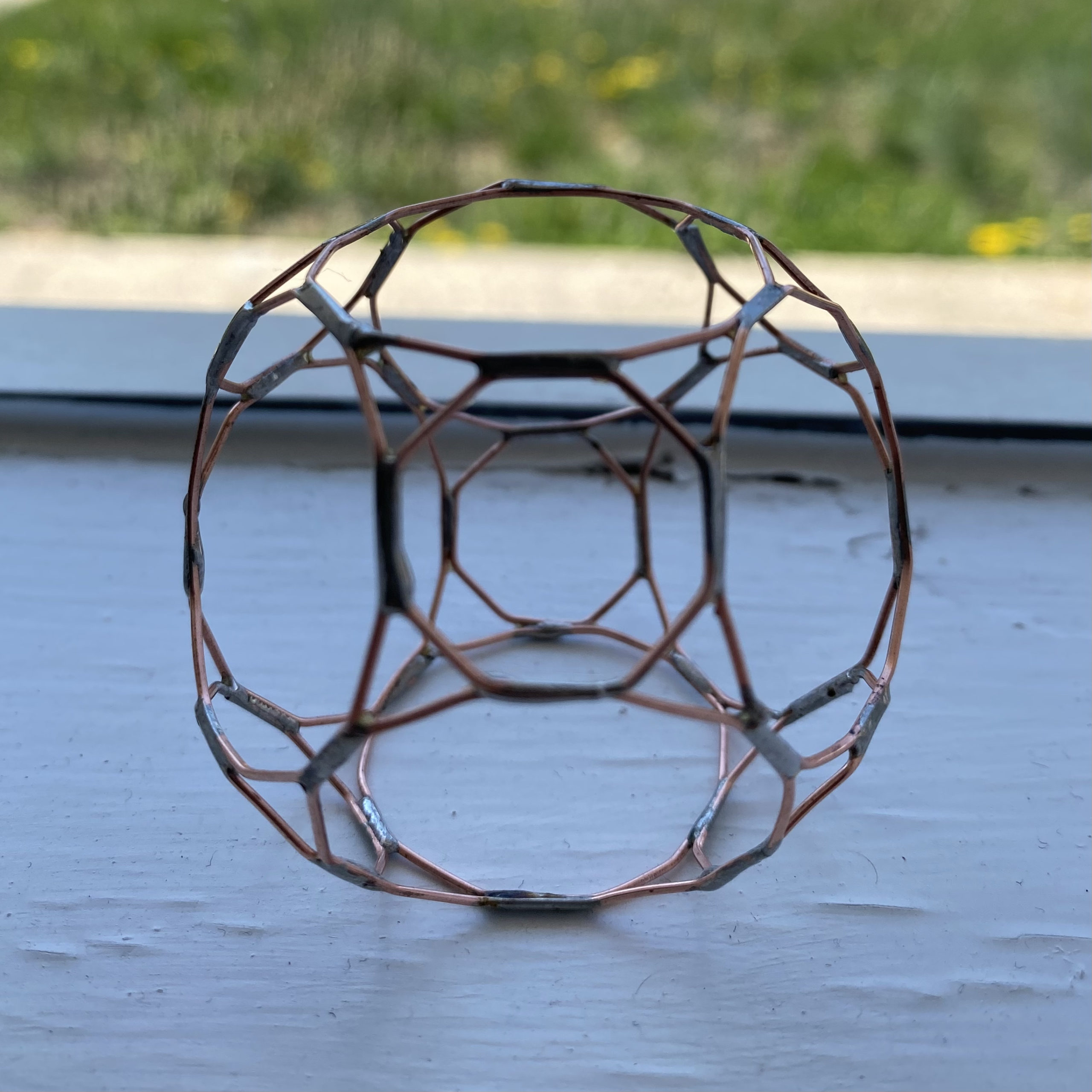
Uttam Grandhi (Truncated truncated octahedron)
Surya-Rekha, copper, tin, and lead [38 F, 108 E, 72 V] The dodecagonal faces resembling the sun (“Surya” in Sanskrit) and the peripheral triangles resembling its rays (“Rekha”), serves as a dedication to the Artist’s parents, with the sun-like faces named after his father, “Surya Rao,” and the triangular rays honoring his mother, “Rekha.” About…
-
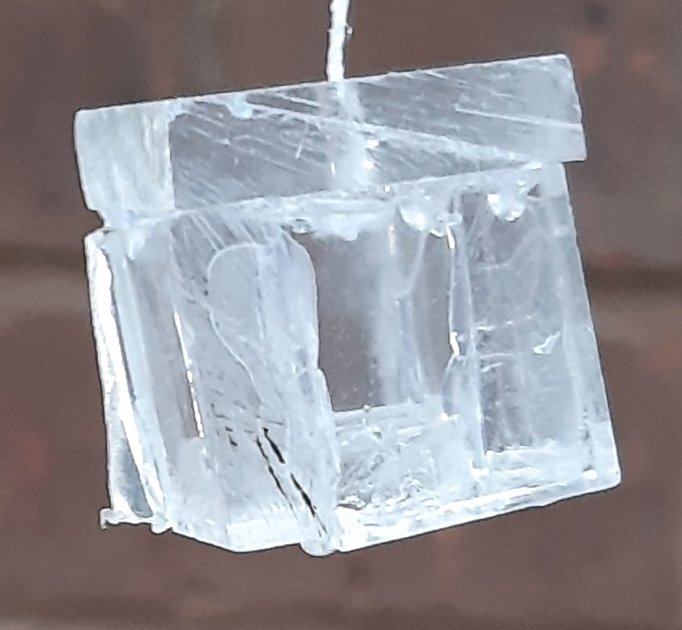
Aapo Halminen
An Acrylic Cube, acrylic, glue, string, and nail polish [6 F, 12 E, 8 V]
-
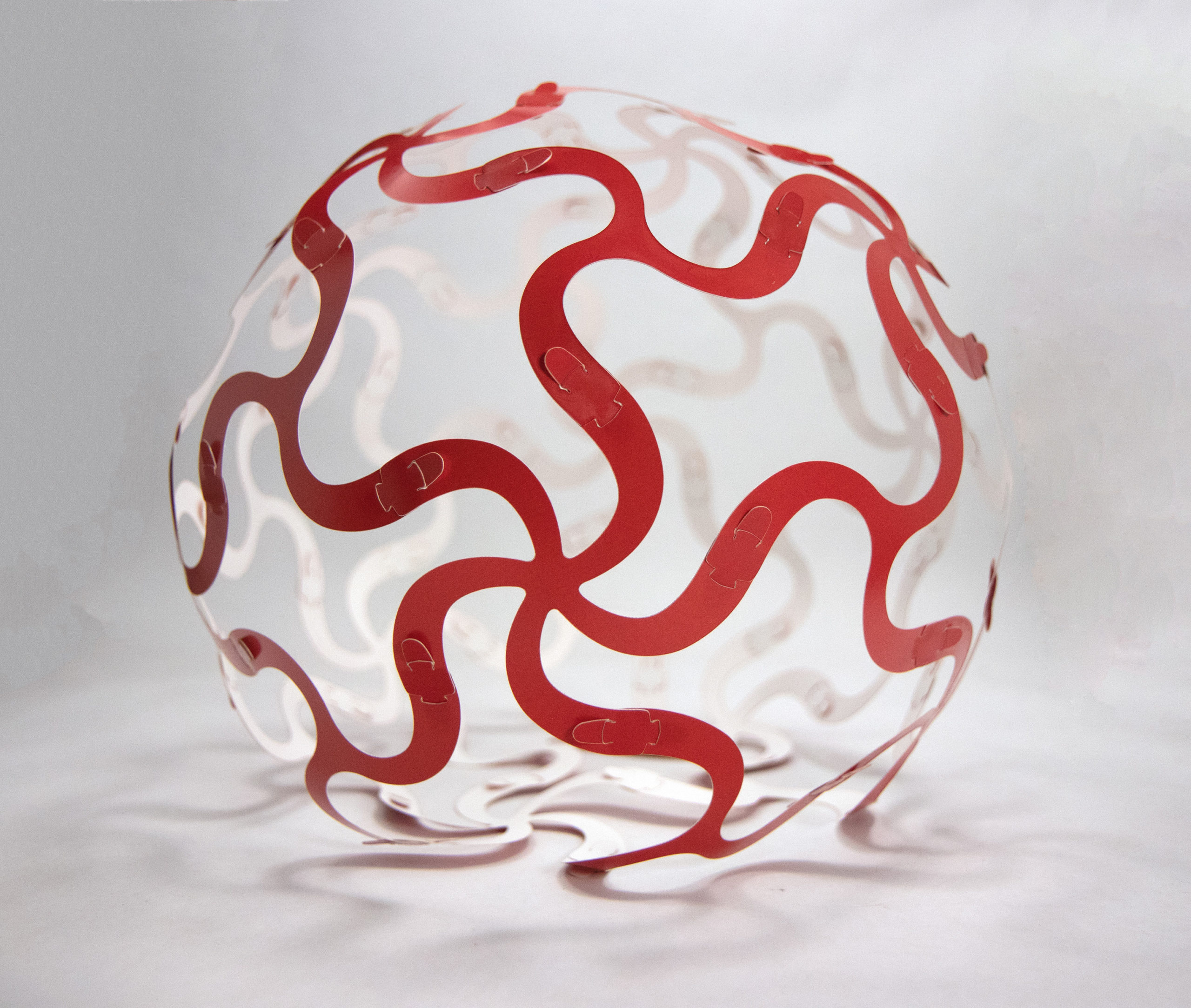
Edmund Harriss (Rhombic triacontahedron)
Curvahedra Rhombic Triacontahedron, die-cut mylar [30 F, 60 E, 32 V] This is the largest of the seven polyhedra that are edge transitive and face transitive (but not necessarily vertex transitive). These are the properties that result in a spherical model when made with the curvahedra system.
-

Bec Hill – A Problem Squared (Irregular Octagonal Prism)
Home, acrylic and glue [10 F, 24 E, 16 V] This took me longer than I’d liked to admit to make. Then it got lost in the post. So it’s either an artistic tribute to failure, or proof that geometry and miracles can co-exist, depending on whether it’s physically in front of you right now.
-

Robin Houston (Compound of 16 cubes)
Untitled, plastic cubes and superglue [15 F, 39 E, 26 V] This shape is the most symmetrical example of a family of polyhedra that can fill all of three-dimensional space by translation, i.e., by only rigidly sliding copies of the shape through space until none of them overlap and there are no gaps. None of…
-
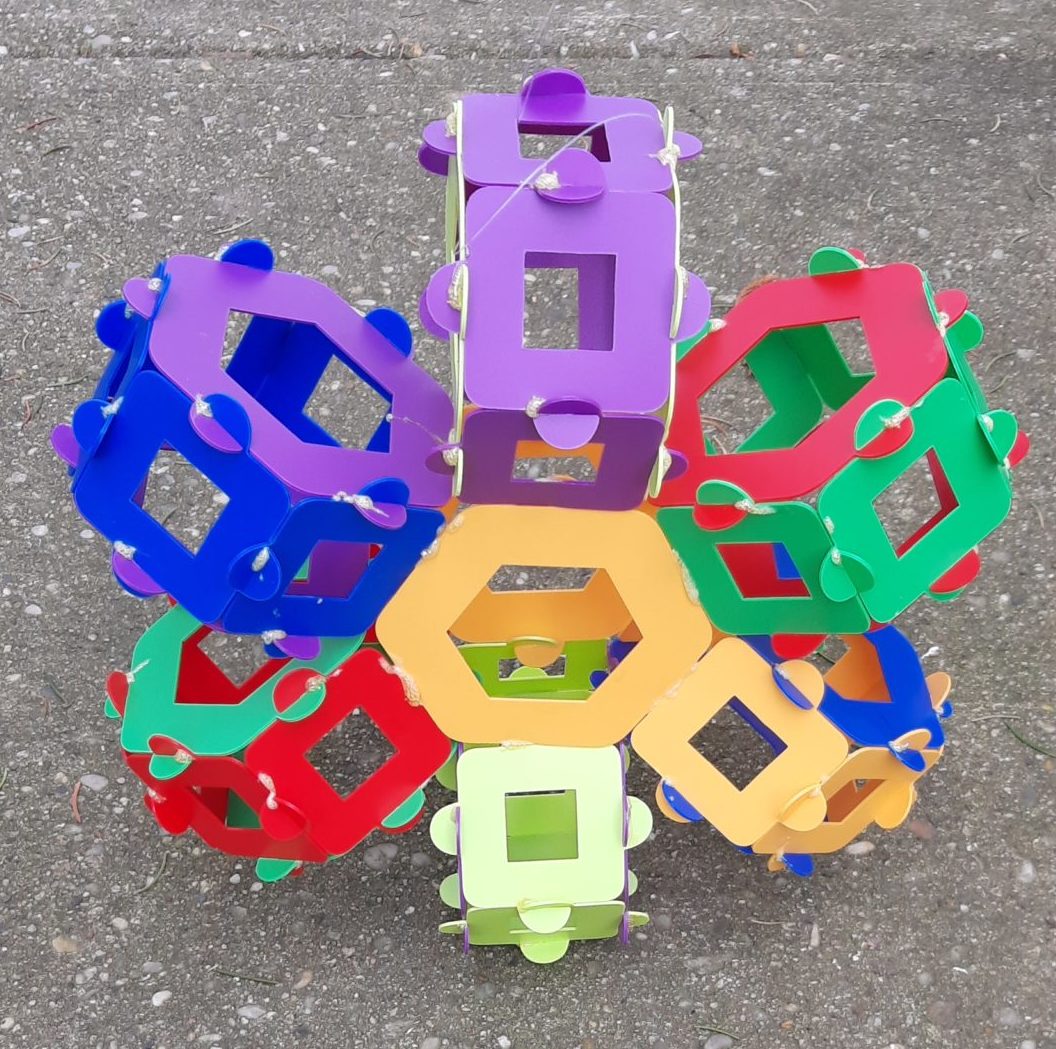
Itsphun (Compound of seven hexagonal prisms)
Untitled, die-cut polypropylene and glue [44 F, 102 E, 60 V] This floral shape shows the versatility and vivid colors of the Itsphun geometric construction toy.
-
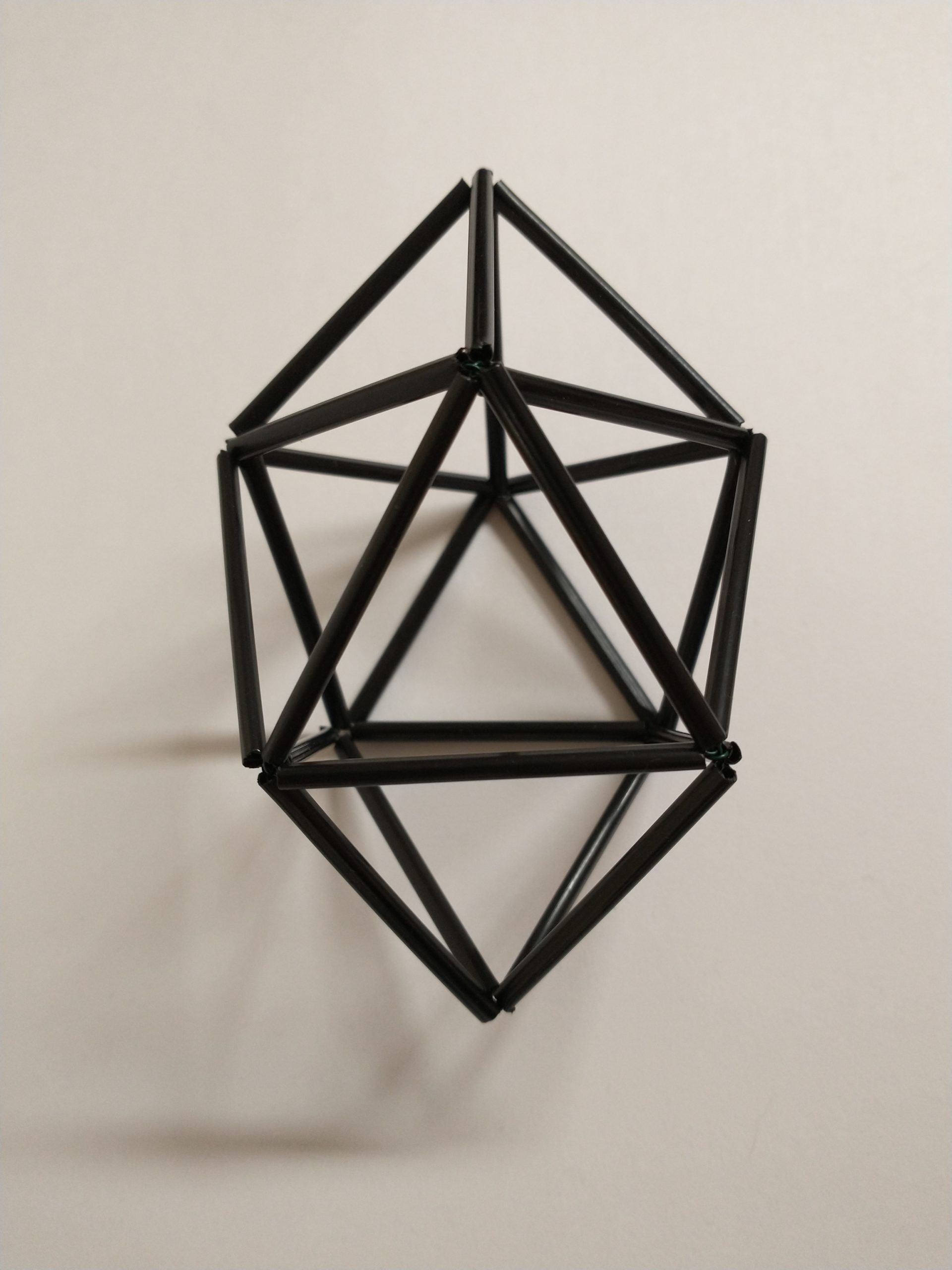
Mark Kaercher (Gyroelongated square bipyramid)
Untitled, plastic coffee stirrers and florist wire [16 F, 24 E, 10 V] I’ve made many of these straw polyhedra over the years, inspired by Finnish Himmeli ornaments.
-
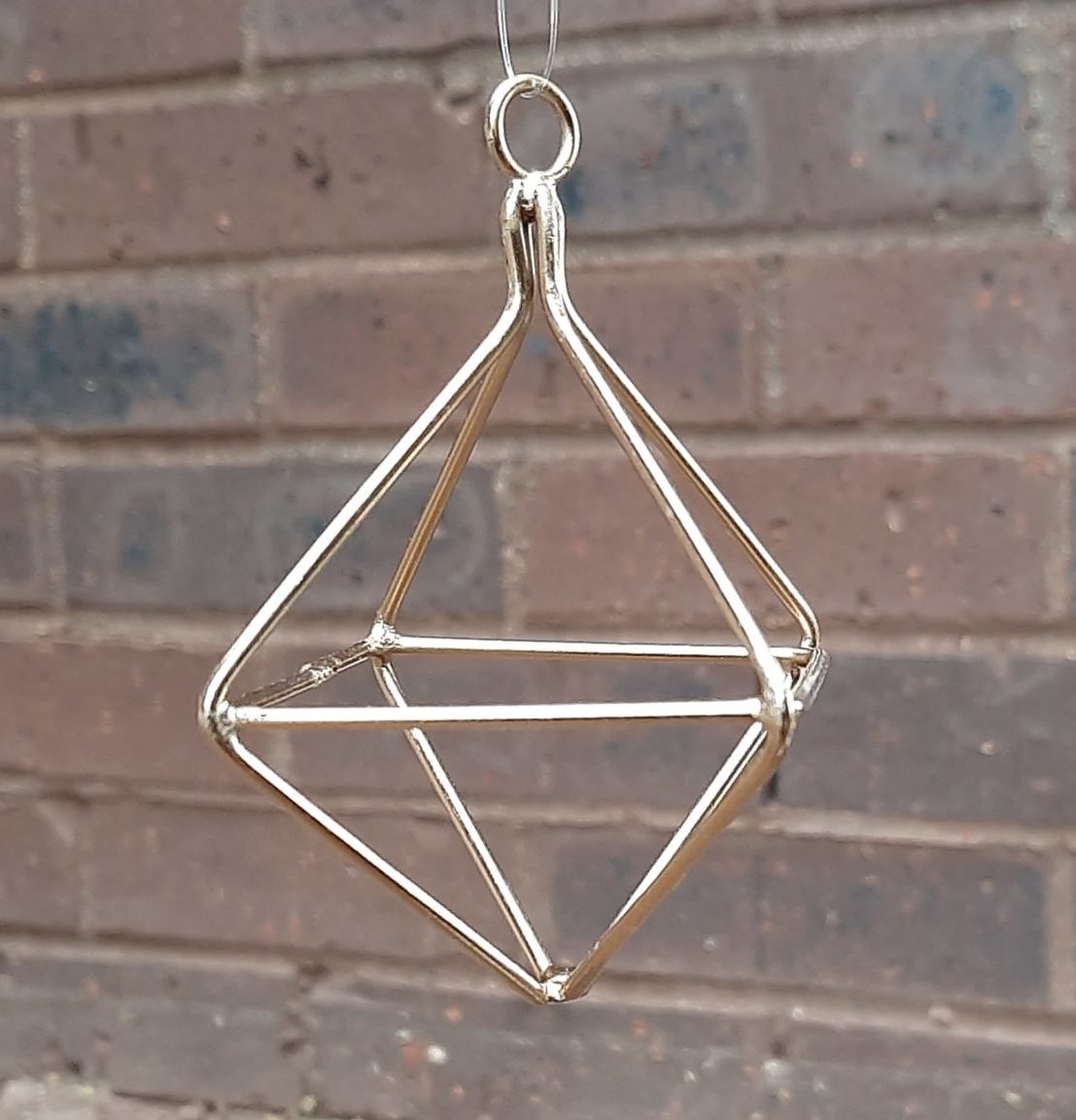
Kimisty (Regular octahedron)
Untitled, brass wire and solder [8 F, 12 E, 6 V] The regular octahedron is one of the five Platonic solids known since antiquity – shapes with no indentations having all identical angles and edge lengths. These solids show up in myriad places: as dice, in architecture, and in nature as the shapes of crystals,…